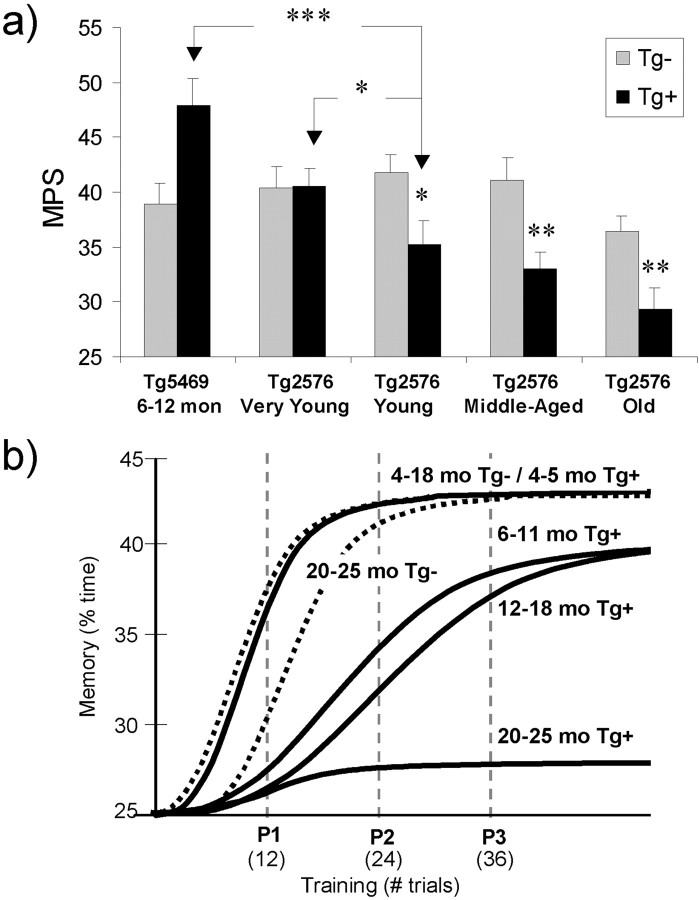Fig. 1.
Age-dependent impairment in spatial reference memory occurs only in transgenic mice expressing mutant APP.a, The mean probe score (MPS), the mean percentage time spent in the target quadrant during all three probes, was used to assess retention of spatial information in the Morris water maze. Random swimming during all three probes would yield an MPS of 25%. There was a significant age-by-transgene interaction in Tg2576 mice (ANOVA; p < 0.05), with significantly lower scores in young (6–11 months), middle-aged (12–18 months), and old (20–25 months) Tg+ mice relative to Tg− mice (t test; *p < 0.05, **p < 0.01). MPSs of 6- to 12-month-old Tg5469 Tg+ mice were significantly higher than those of Tg− littermates (t test; **p < 0.01) and age-matched Tg+ Tg2576 mice (t test; ***p < 0.001), excluding APP overexpression as a cause of memory loss in Tg2576 mice. No significant decrease in MPS was observed in very young Tg2576 Tg+ mice devoid of Aβinsol. A significant drop in performance occurred in young Tg2576 Tg+ mice (t test; *p < 0.05), coincident with the appearance of Aβinsol. b, The learning curves of Tg+ and Tg− mice at different ages are represented, showing memory (percentage time in the target quadrant) assessed during the three probe trials,P1, P2, and P3, performed after the 12th, 24th, and 36th training trials. As expected, memory improves with training and appears to saturate. With age, there is a rightward shift of the curves. In Tg+ mice there is an apparent lowering of the saturation level of memory.

